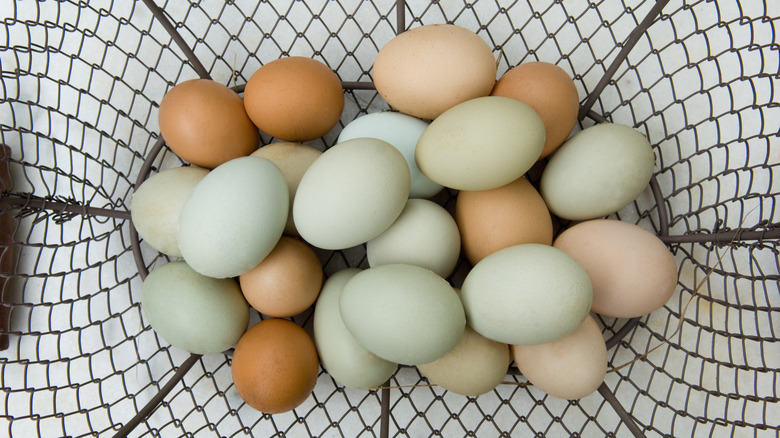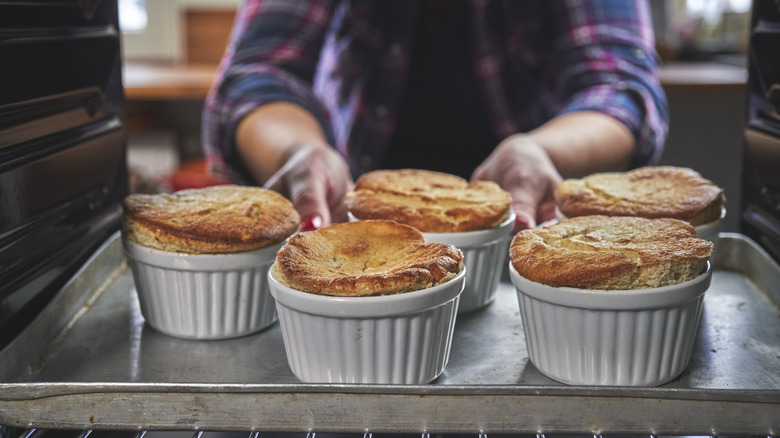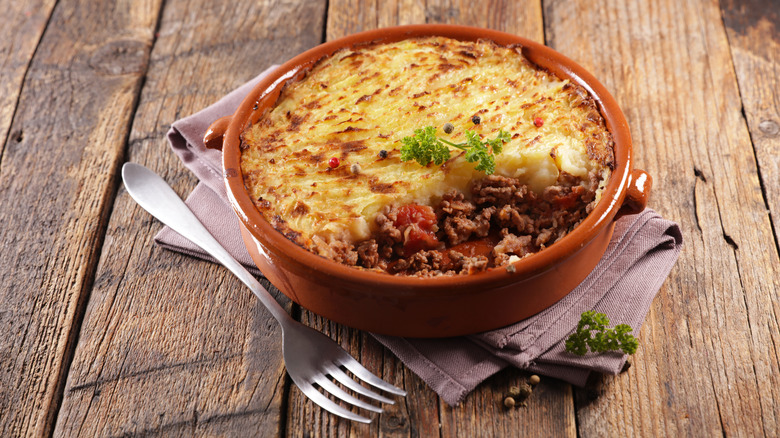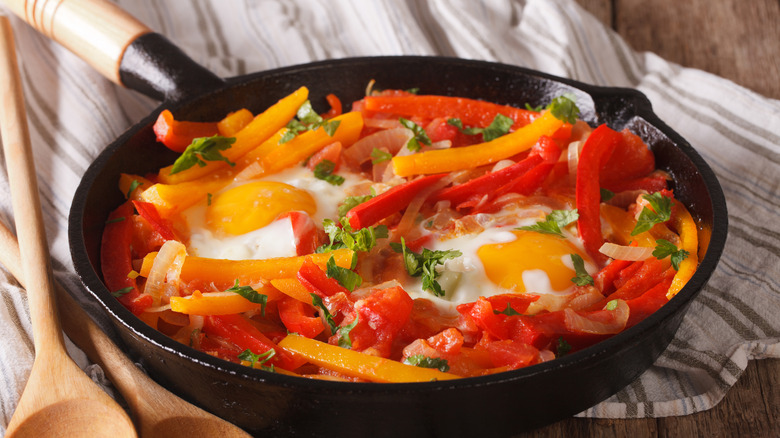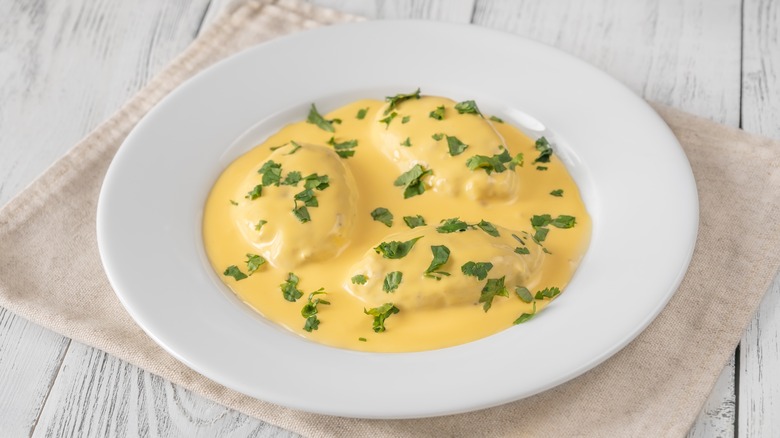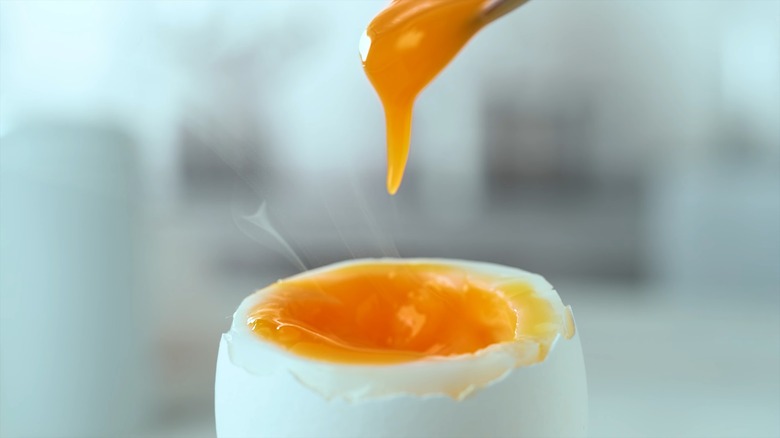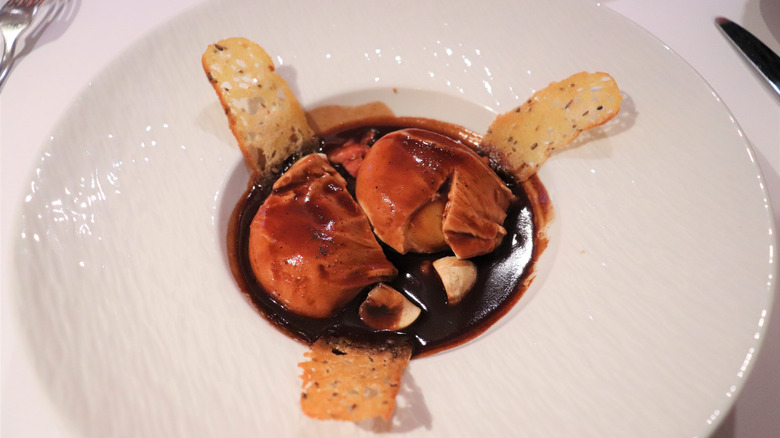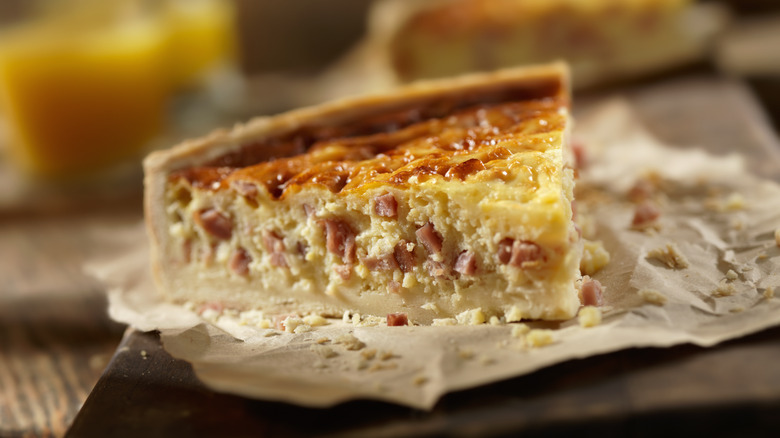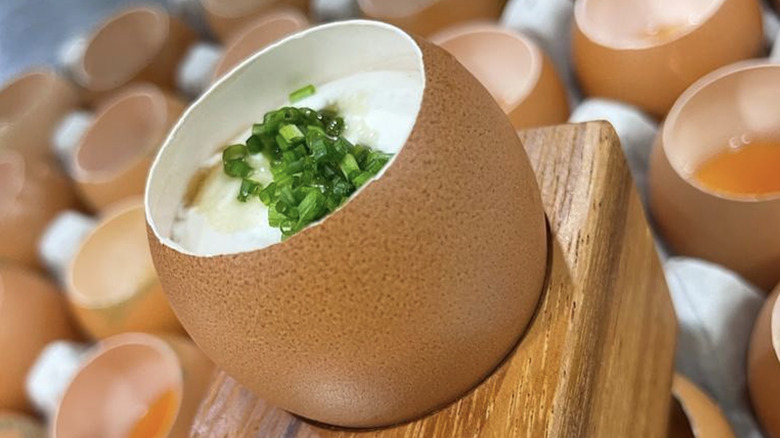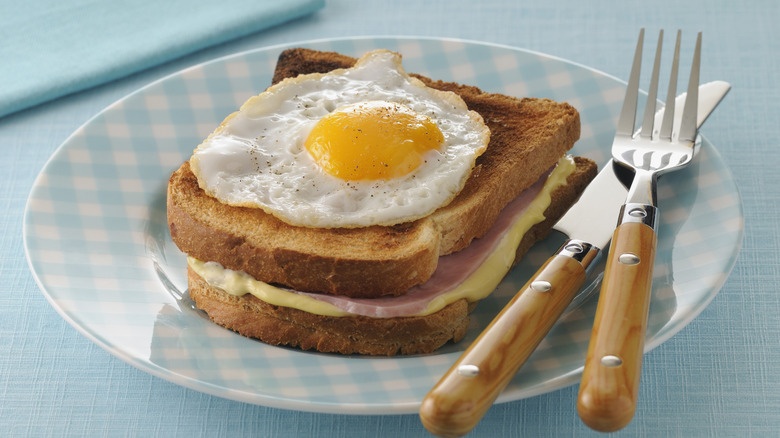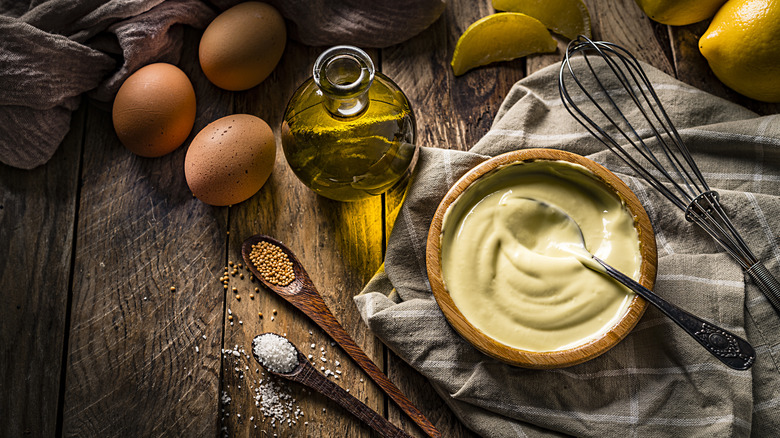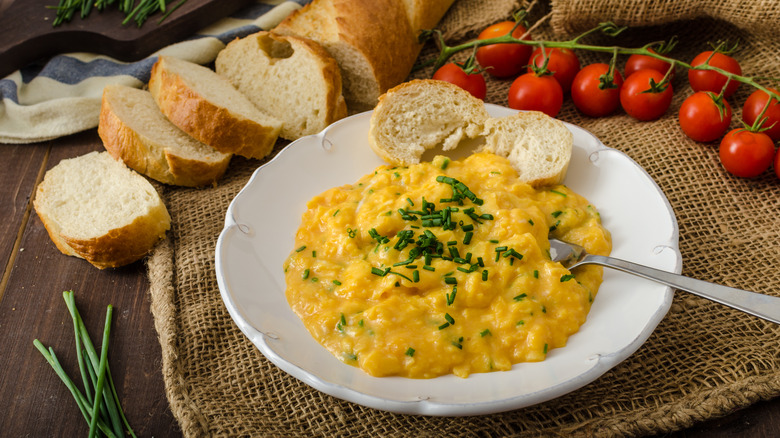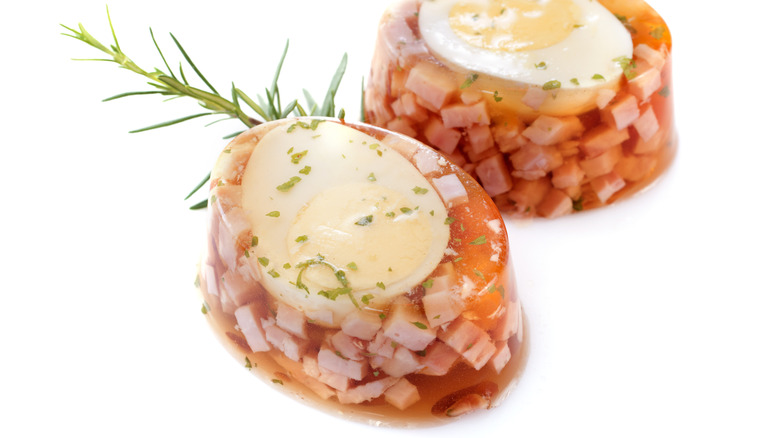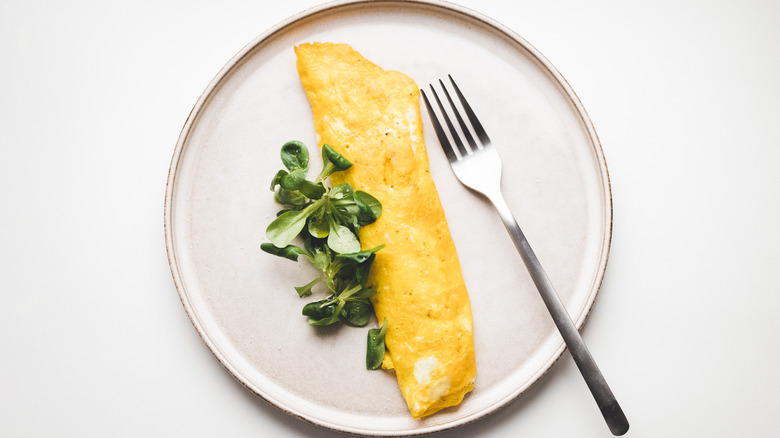14 Egg Dishes From France You Should Know About
When it comes to eggs, the world is your oyster. Humans have been eating eggs since time immemorial, in all different cultures across the globe, and they're incorporated in some way into almost every cuisine on the planet.
French cooking is no exception. The culture and techniques of French cooking have more of a global influence than perhaps any other. French chefs elevated cuisine into an art form that spread around the world through colonization and mass media, with American chefs like Julia Child preaching the gospel of French cooking. Needless to say, the French know what to do with eggs.
Whether they're scrambled, boiled, served in the shell or poached in wine, these French recipes show the potential of the humble egg, and its place in both simple and complex recipes. So, let us egg you on to keep reading and learn some egg-cellent French egg recipes you should know about.
Soufflé
A basic soufflé contains only four ingredients: flour, milk, eggs, and butter. Sounds pretty simple, right? But there's a secret ingredient that often comes into play in French cooking: technique. Despite its deceptively short ingredients list, there's a reason a soufflé is so difficult to make. So many different things can go wrong — it can rise too much, not enough, or become sloppy and heavy.
The key to getting a soufflé perfectly poofy is knowing exactly how much to whisk your whites. When egg whites are whisked, they get nice and airy, which provides the soufflé with its signature shape and texture; if you don't beat them enough, your soufflé will turn sloppy, but if you beat them too much, the proteins in the whites break down, which will cause your soufflé to fall.
Once you master this tricky French egg dish, you'll be able to impress dinner guests with one of the most notoriously treacherous recipes around. You can give your soufflé a variety of flavors, sweet or savory, depending on how you're feeling. Chocolate, cheese, spinach, vanilla, and carrot are just some of the options available to a soufflé master.
Hachis Parmentier
You may have heard of shepherd's pie or cottage pie, both classic dishes served across the British Isles, but have you heard of Hachis Parmentier? This French-style meat pie is similar to its cousins across the English Channel — and, like Shepherd's Pie, many variations exist with slightly different ingredients.
But a few things do make Hachis Parmentier distinctly French. It calls for finely chopped minced meat (beef, pork, or a combination of both) instead of ground beef and (of course) white wine in the meat mixture to add depth of flavor. You either mix eggs into the meat mixture with herbs, garlic, and salt or chop up a hard boiled egg and put it in that way. Either way, you'll end up with a savory, hearty dish that is one of France's favorite comfort foods. So, next time July rolls around, celebrate Bastille Day with one of France's most underrated dishes.
Oufs Cocotte
The French certainly know how to make simplicity into an art form, and Oufs Cocotte is a perfect example. In their simplest form, Oufs Cocette are just eggs cooked in individual ramekins with a little butter and cream (or crème fraîche), baked until the whites are firm and the yolks are still runny, making a perfect, elegant dish to serve at breakfast or brunch.
But because they're so simple, it makes them a great way to have a little fun with some culinary experimentation and unlock your inner "chef de cuisine," as they say in France. You can add different vegetables, like asparagus or green onions, or get cheesy with some crumbled feta or parmesan. You could even get extra decadent and add a dollop of caviar if you want to feel like Marie Antoinette in the olden days. However you decide to dress them up or down, these eggs are key to a fancy breakfast with little effort.
Eggs Pipérade
France is beloved for its distinct regions, each with its own culture, customs, and cuisine. The Basque region, located in the country's southwest corner, is certainly no exception.
The Basque dish eggs pipérade is made by cooking a tomato stew and adding bell peppers and onions. You can play with how you want to add the eggs: plop them in and cook them in the stew itself, or scramble on the side and place them on top if you want a drier end result.
While egg dishes cooked with tomatoes and peppers are found in many different cultures, eggs pipérade contains a unique ingredient: piment d'espelette. This pepper, originally from Mexico, gives a pipérade a slight kick (its spice level is significantly lower than cayenne, but packs a bit more of a kick than paprika) that differentiates the dish from most French cuisine, which is usually not spicy. So, if you're looking to shake up your breakfast routine, these veggie-infused Basque eggs will not disappoint.
Quenelles
A quenelle is a type of dumpling, as well as one of those French dishes that never quite became mainstream in the United States. The word has a broad definition in French cuisine, depending on the context in which it's served. Quenelles can be made with fish, meat, or chicken and mixed with eggs, breadcrumbs, and butter for a savory appetizer or with ground almonds, egg whites, and sugar and served as a dessert.
But the essence of a quenelle is that it's made with egg and once you've formed oval-shaped dumplings with whatever ingredients tickle your fancy, you poach them in water or milk and serve them with sauce. The sauce, of course, depends on what your quenelles are made of. For sweet dessert quenelles, you can use a fruit sauce made with berries and sugar; for a savory quenelle, you can use cream sauce, hollandaise, or a hearty broth. These are just a few suggestions; if you're going to make these yummy, eggy ovals of goodness, feel free to get creative.
Oeufs à la Coque
Sometimes you don't need to dress an egg up with fancy ingredients to make it delicious. An egg can be a treat on its own, and no dish celebrates the mighty egg itself better than oeufs à la coque.
Rumor has it that King Louis XV, who ruled France in the 18th century, loved oeufs à la coque so much that he carried his golden eggcup around with him. Coque mean shell in French, and this dish is so named because the soft-boiled egg is served in the shell alongside toasted fingers of bread called mouilletes, which are to be dipped into the egg to get every bit of eggy goodness.
The key to making great oeufs à la coque is mastering the art of the simple soft-boiled egg, which sounds easy, but there are some rules you need to follow. First, bring your eggs up to room temperature, put them in a sauce pot and cover them with water, then heat the water until it comes to a simmer and let the eggs cook for six minutes. Next, submerge your eggs in a cold water bath to halt the cooking process. Then, for the mouilettes, toast a piece of bread and slice it up into little strips, spread some butter, and enjoy the eggs like a French royal.
Oeufs en Meurette
What could be more French than poaching your eggs in red wine? The French have a reputation not only for making great wine, but for using it to cook savory dishes like coq au vin and boeuf bourguignon, strengthening and enhancing the flavors in the dish. Though not quite as famous, oeufs en meurette is another dish that uses wine, in this case to highlight the taste of eggs.
Oeufs en meurette comes from the Burgundy region of France, where meurette sauce is popular. Meurette sauce is made with chicken stock, onions, bacon, carrots, herbs and spices, and, of course, a healthy pour of red wine. Simmer the mixture until it cooks down and then pop in a couple of eggs until they're poached to the point that the yolk is nice and jammy. Toast some bread and rub it with a garlic clove to give it a nice bite, and don't forget to enjoy a nice glass of Burgundy wine when it's ready to serve.
Quiche Lorraine
Quiche Lorraine is one French egg dish that has successfully made its way across the Atlantic. Named for the Lorraine region of France where it originated, this classic egg dish is made by baking a mixture of eggs, cream, cheese, and bacon or ham inside a pie crust. In the US, quiche can often be found as a snack in a nice coffee shop or served alongside a simple salad at an upscale brunch, but there's nothing more French than making quiche Lorraine yourself at home.
The key to a great quiche Lorraine is a great crust. While you can always buy a frozen one at the store, making your own is the way to go. One of the biggest mistakes everyone makes when cooking quiche is using the wrong crust. Ideally, you should make a simple shortcrust without too much sugar, roll it into a pie tin and blind bake it before you add the egg mixture so that the crust doesn't become soggy. When you take a bite of a steamy, homemade quiche Lorraine, you won't regret having made the extra effort.
Ouef L'Arpège
Only the bravest of chefs would dare try to tackle an ouef l'Arpège, named after the three-Michelin star l'Arpège restaurant. It's an upscale twist on a French classic — the oeuf à la coque — and it's the brainchild of the restaurant's head chef, Alain Passard. It's as unique as it is exclusive, and if you count yourself among the diners lucky enough to have ever landed a seat at the restaurant, you'll recall it as one of the most distinctive egg experiences the world has to offer.
It's made by taking the top off the shell of a fresh egg and draining out the white, leaving the yolk intact. The egg is then heated in a water bath and topped with a surprising list of ingredients: chives, maple syrup, fleur de sel, and crème fraîche mixed with aged sherry. It may sound like an odd combination of flavors, but when it comes to pushing the envelope with eggs, you just have to trust M. Passard.
Croque Madame
The croque madame is so ubiquitous in Paris that you can hardly walk by a brasserie in the summer without seeing somebody slicing into one of these delicious French sandwiches. There are two types of croques you'll find on the menu at French restaurants: the croque monsieur and the croque madame. Though they're both essentially ham and cheese sandwiches, the difference between a croque monsieur and a croque madame comes down to whether or not it has an egg on top; the madame does, and the monsieur does not.
Maybe a sandwich doesn't sound too special, and there are some variations on how they're made, but essentially, ham and a cheese (usually emmental, gruyère, or comté) is put between two slices of bread, buttered (heavily, we're talking about French food here), and put on the grill until the outside is nice and crunchy. Croque, after all, means "crunchy bite" in French.
For a croque madame, an egg is then fried and, with the yolk still runny, served atop the sandwich so that when you slice into it, the crunchy sandwich is covered in the rich, creamy egg yolk. This is a simple delicacy you won't want to miss.
Ouef Mayonnaise
You may think of egg salad as a classic American dish served at stateside barbecues and potlucks, but the French have their own take on it: ouef mayonnaise. This Parisian appetizer is exactly what it sounds like: eggs topped with mayonnaise, which is, of course, made with eggs, so get ready to double down on your egg intake. The key to a delicious ouef mayonnaise is making the mayo yourself.
Mayonnaise may seem like an intimidating thing to make at home since Americans are accustomed to buying it at the store, but it's not as complicated as you think. It's just a matter of getting the timing right.
Mix eggs with salt and dry mustard, slowly whisk in lemon juice and vinegar to form a paste, and then vegetable oil until you achieve that rich consistency. Then make some hard boiled eggs, peel them, and place them on a plate. Cover with mayonnaise and a bit of garnish (you eat with your eyes first, after all) and enjoy.
Brouillade
There's scrambled eggs, and then there's brouillade (sometimes known as ouefs brouillé). These French scrambled eggs differ from their American cousins in a couple of crucial aspects. First, the French are famously bold in their use of fat, so don't be shy when buttering up your pan. Next, keep the stove on very low heat; the eggs need to cook super slowly, and you need to take them off the heat as soon as they hit a porridge-like consistency.
Finally, more fat. Once the eggs have reached the desired texture, mix in a bit more butter, some crème fraîche, and add a bit of parsley or chives as garnish if you really want to feel like you're eating at a fine Parisian bistro. Lastly, don't forget to toast up some nice French brioche bread so you can sop up every bite of this decadent scramble.
Ouefs en Gelée
It may not be the most stylish concept anymore to serve eggs encased in gelatin, but oeufs en gelée is a retro French egg preparation you can still find at old-style charcuteries around Paris. To make this vintage appetizer, you'll need to start by either preparing beef or veal consommé or buying some at the store — note: the difference between broth and consommé is that the latter is made by clarifying broth using egg whites.
Pour just a bit of consommé into individual ramekins with sheets of gelatin and put them in the fridge until they are firm. Once you've got your that ready, make some poached eggs, cool them in a cold water bath so they don't keep cooking, and place one in each ramekin on top of the jellied consommé. Then, fill the rest of the ramekin with consommé and let the ramekins sit in the fridge for a few hours before serving. You can also add other ingredients, like veggies or ham, to the gelatin mixture for added flavor.
French Omelette
Chances are you've had an omelet before, but have you had an omelette? The first difference between American and French omelettes is that the American version is typically stuffed with cheese, meat, or vegetables. The French omelette, on the other hand, is very simple: just eggs, butter, and maybe some fresh herbs. It has more to do with the technique than ingredients.
First, mix a couple of eggs in a bowl with a fork and melt your butter in a pan over low heat. Pour the egg mixture in, and stir it with the fork. Let it cook a bit and then, depending on how runny you want your omelette (typically, at the consistency of a thin custard), take the pan off the heat and tilt it with the handle, using your fork to pick up one of the edges of the omelette and fold it over, tucking the omelette into one corner of the pan. Serve hot, with a garnish of fresh herbs.
